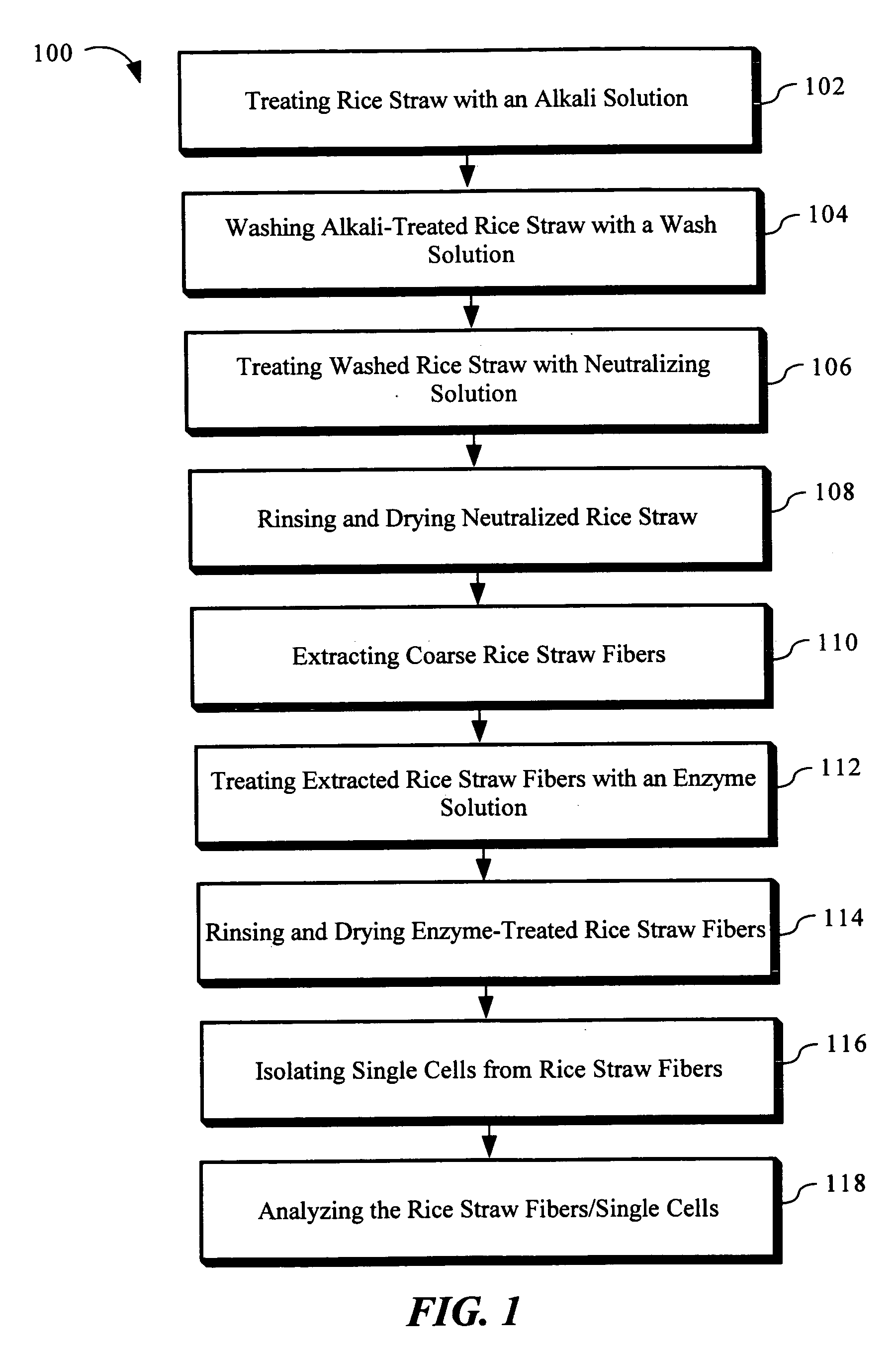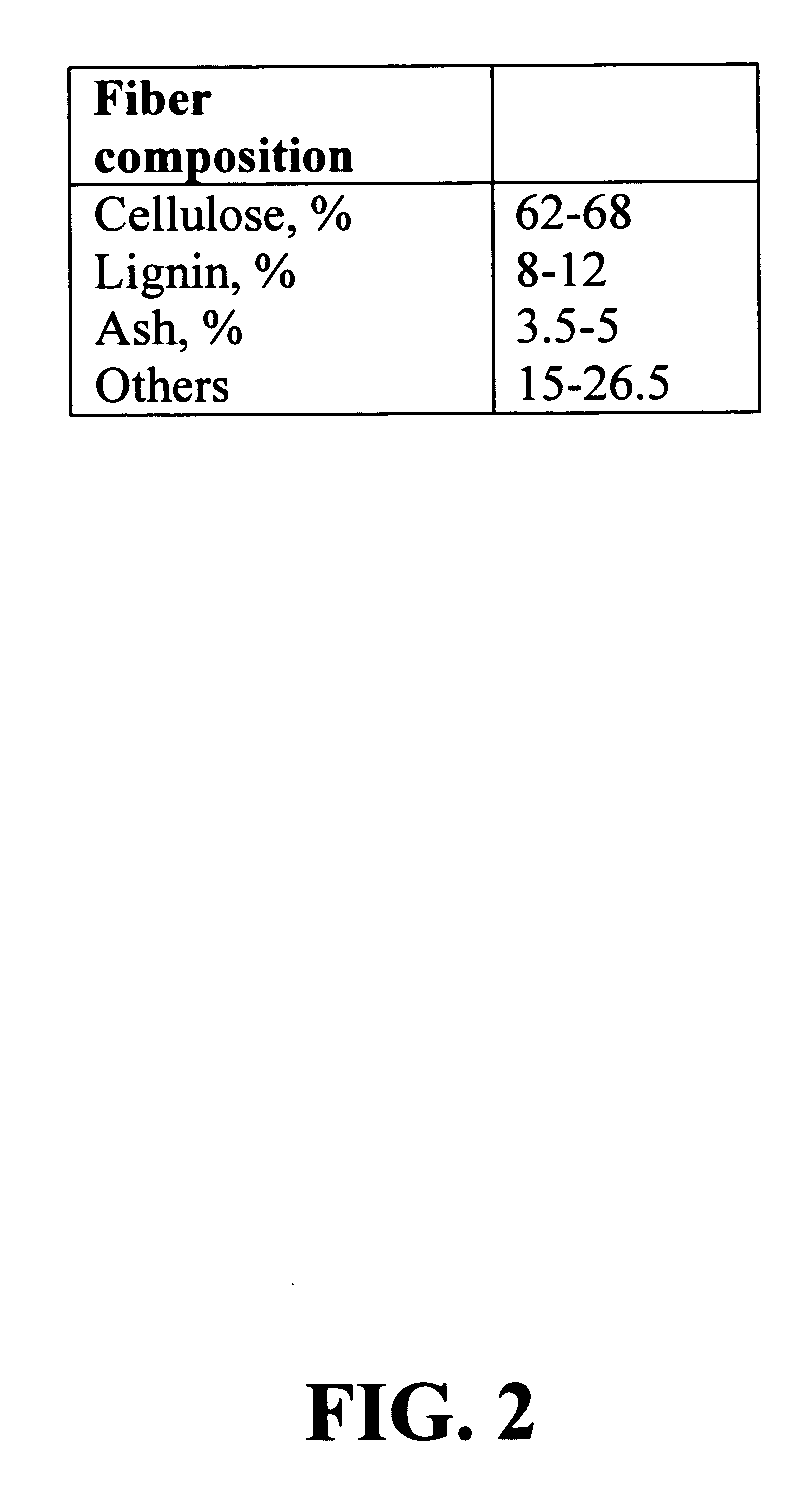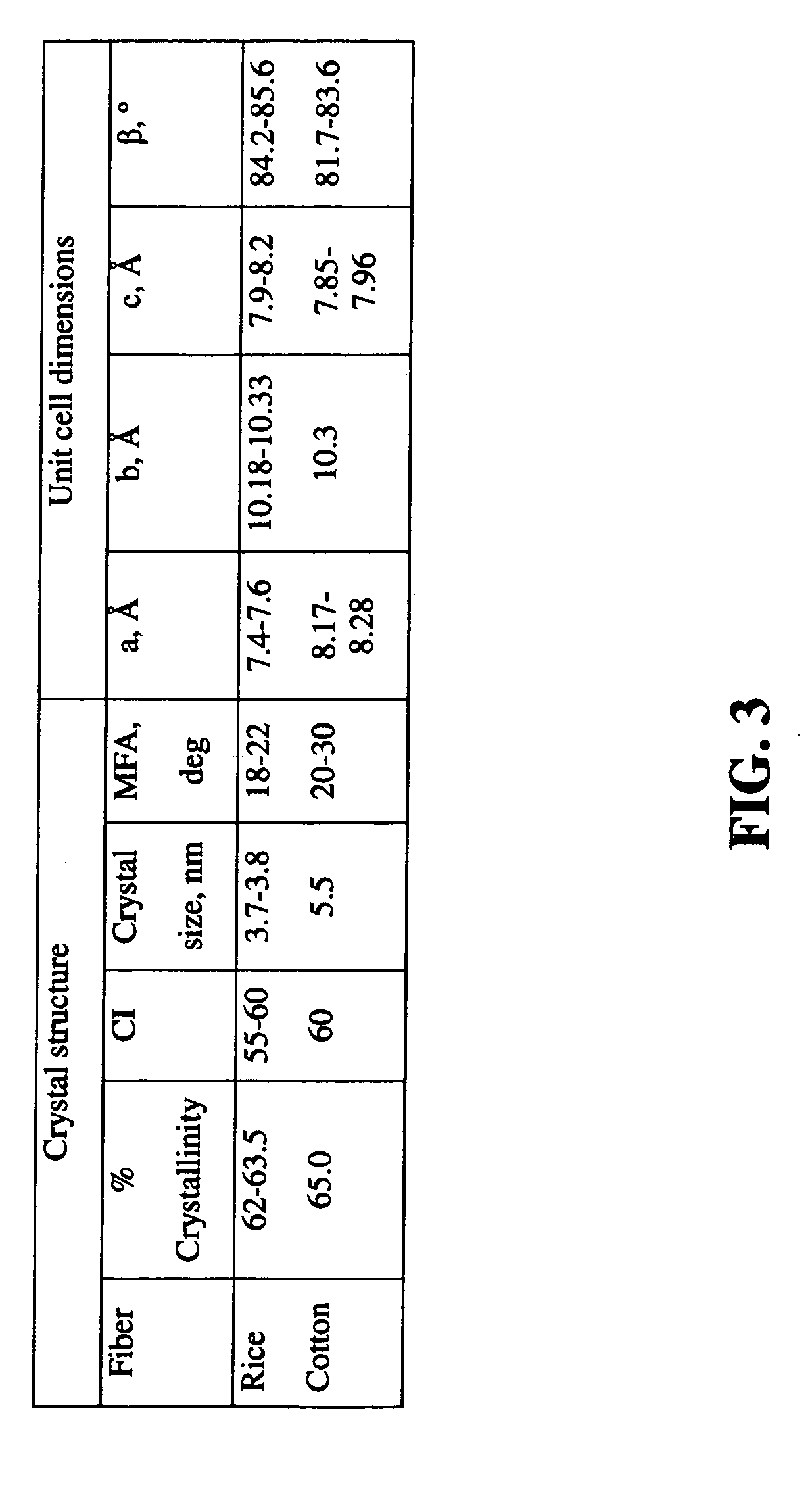High quality and long natural cellulose fibers from rice straw and method of producing rice straw fibers
a technology of natural cellulose fibers and rice straw, which is applied in the field of natural cellulose fiber production, can solve the problems of limited use of rice straw in construction, papermaking, fuel and energy industries, and the most of the rice straw available after harvest is either left on the ground or burned, and achieves the effects of high value, high quality and high value of rice straw
- Summary
- Abstract
- Description
- Claims
- Application Information
AI Technical Summary
Benefits of technology
Problems solved by technology
Method used
Image
Examples
example 1
Ring Spun Yarns from Blends of Rice Fibers with Cotton
[0054] Rice fibers obtained by the method 100 were processed on the conventional spinning machines. Rice fibers obtained from rice straw with an average of 20 denier were processed using a miniature spinning machinery. Rice fibers were hand blended with cotton in the weight ratio of 50 / 50. The rice fiber blends were processed through a modified card and drawframe to obtain the required grain sliver. All samples were carded twice for uniform mixing and parallelization of the rice fibers. Slivers from the drawframe were spun directly on a miniature sliver to yarn ring spinning machine. Parameters on the ring spinning machines were adjusted to obtain various counts of yarns. The finest yarns produced from 50 / 50 rice fiber / cotton blends were of 30 tex. The parameters used to process the rice fiber blends on the ring spinning machines are provided in FIG. 12. The properties of the rice fiber / cotton blended yarns were tested on standa...
example 2
Open-End Spun Yarns from Blends of Rice Fibers with Cotton
[0055] Various ratios of rice fibers were blended with cotton and processed on the open end spinning machines. The fibers were hand blended, processed on the card and drawframe to produce slivers. The silvers were spun into yarns on a Rieter open end spinning machine. The parameters that were used to produce various blends and counts of rice fiber / cotton yarns on the open end spinning machines are given in FIG. 13. Such parameters produced 84 tex rice fiber / cotton blended yarns in the ratio of 35% rice fiber to 65% cotton on the open end machine. The yarns formed had about 65% strength and 80% elongation retention compared to a 100% cotton yarn of the same count produced using the same conditions of producing the blended yarn.
example 3
Ring-Spun Yarns from Blends of Rice Fibers with Polyester
[0056] Rice fibers with an average of 20 denier were hand blended with polyester in the weight ratio of 65% polyester to 35% rice fibers. The rice fiber blends were processed through a modified card and drawframe to obtain the required grain sliver. All samples were carded twice for uniform mixing and parallelization of the rice fibers. Slivers from the drawframe were spun directly on a miniature sliver to yarn ring spinning machine. Parameters on the ring spinning machines were adjusted to obtain various counts of yarns. The finest yarns produced from 65 / 35 polyester / rice fiber blends were of 27 tex. The properties of the polyester / rice fiber blended yarns were tested on standard yarn testing machines. Results show that the rice fiber blended yarns have similar strength and elongation compared to 65 / 35 polyester / cotton yarns produced using the conditions used to produce the rice fiber blended yarns.
PUM
| Property | Measurement | Unit |
|---|---|---|
| Temperature | aaaaa | aaaaa |
| Temperature | aaaaa | aaaaa |
| Length | aaaaa | aaaaa |
Abstract
Description
Claims
Application Information
 Login to View More
Login to View More - R&D
- Intellectual Property
- Life Sciences
- Materials
- Tech Scout
- Unparalleled Data Quality
- Higher Quality Content
- 60% Fewer Hallucinations
Browse by: Latest US Patents, China's latest patents, Technical Efficacy Thesaurus, Application Domain, Technology Topic, Popular Technical Reports.
© 2025 PatSnap. All rights reserved.Legal|Privacy policy|Modern Slavery Act Transparency Statement|Sitemap|About US| Contact US: help@patsnap.com



